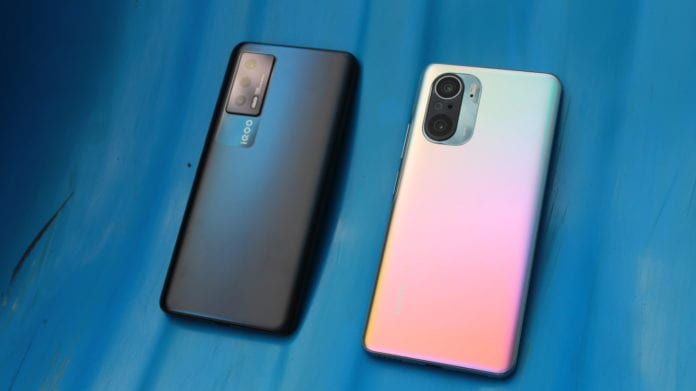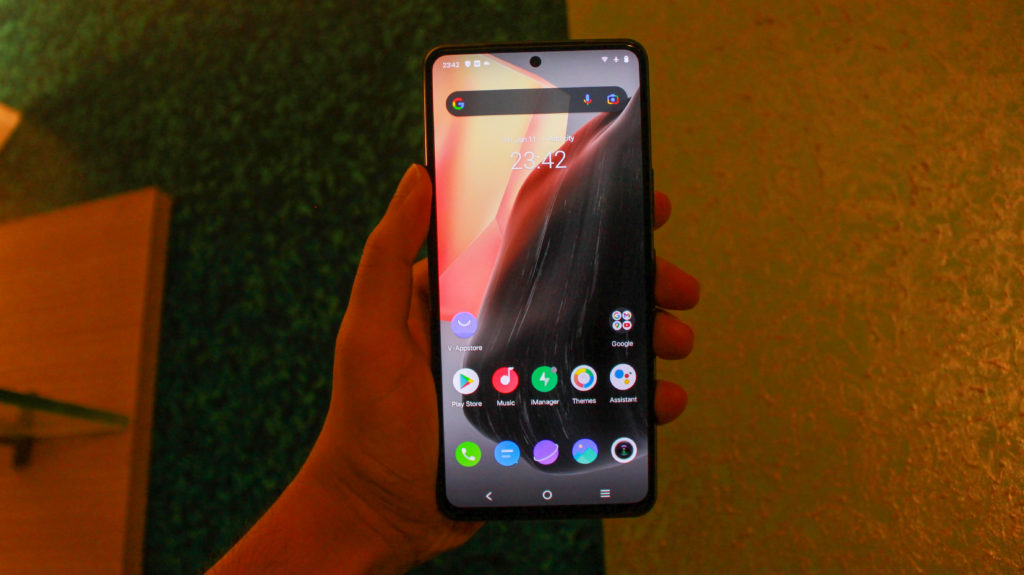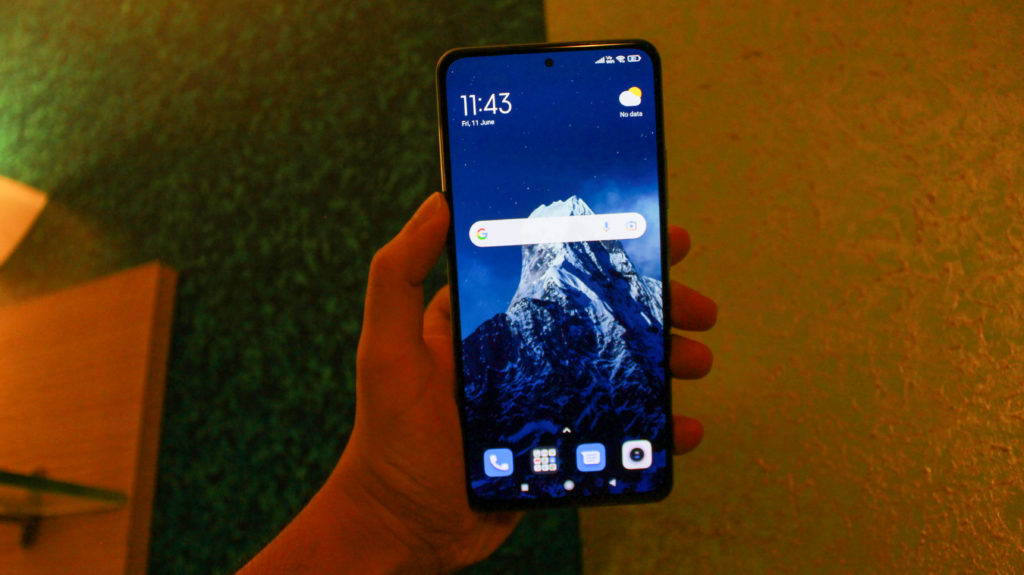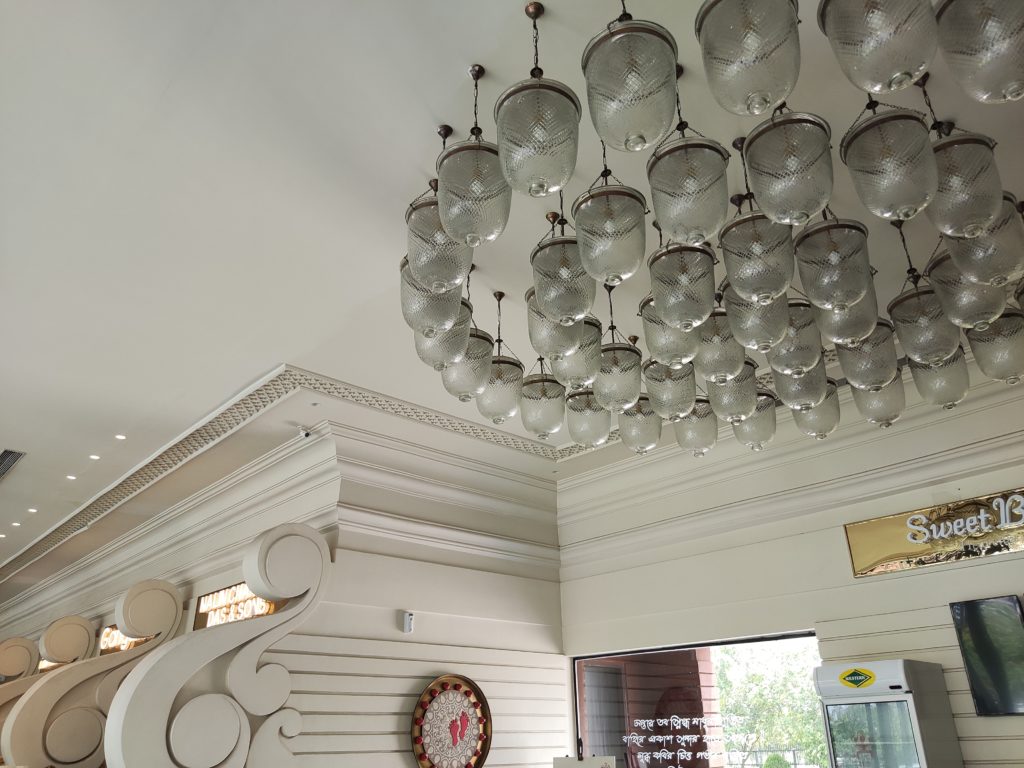Xiaomi has decided to shake up the newly induced ‘budget flagship category with its Mi 11 lineup. The Mi 11X and Mi 11X Pro cater to the sub-Rs. 30K and sub-Rs. 40K mark respectively, making some of the leading hardware in the industry today accessible at a much lower price point.
There’s one more smartphone from the house of Vivo that intends to do the same. Yes, I am talking about the iQOO 7. You must’ve come across tons of content on the internet where these two powerhouses go up against each other. I, however, intend to take a slightly different approach.
Being an all-rounder is far more critical than being excellent in any one category in our daily lives. So, when I got my hands on the Mi 11X and iQOO 7, I decided to take up a challenge to use these devices from a daily driver point of view and not to focus on, say, just gaming or the camera.
Which variants are we comparing?
These devices aim to cater to people willing to taste flagship-level performance without selling their kidneys off. So, in a budget-conscious segment such as this, it’s wise to take up the most accessible variants of both devices and check them out.
For our comparison, we will be using the 6GB of LPDDR5 RAM coupled with 128GB of internal storage model of the Mi 11X. And for the iQOO 7, the lowest variant comes with 8GB of RAM and 128GB of storage. Both these devices use UFS 3.1 storage systems.
How well do they stack up?
A quick look at the spec-sheet will leave your head spinning; for instance, I almost thought both these smartphones were the same! However, on a closer inspection, you still can knit-picking, and that’s precisely what I have done for the past few days. So let’s put them head-to-head, shall we?
Design – Mi 11X stands out of the crowd
The Mi 11X and iQOO 7 were never designed to win awards, but at least they’re not ugly. So I would go the extra mile and say I quite like the design of the Mi 11X.
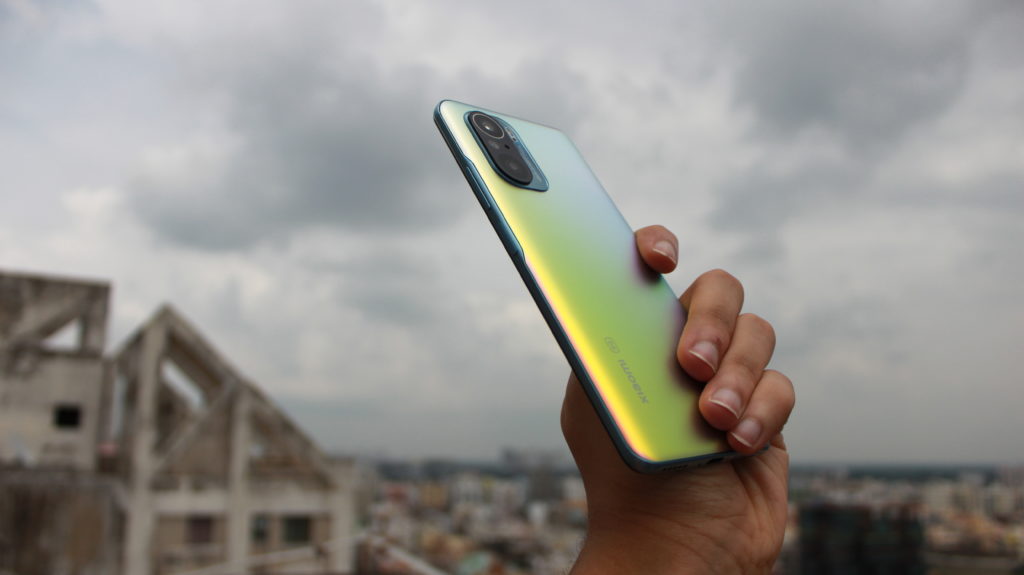
The Mi 11X manages to make the camera set up at the rear look good, and boy, we’ve seen really bad camera humps. The rest of the phone wraps nicely around the camera design, and the lines smooth and clean. I especially liked how the rails thicken to accommodate the power button/fingerprint sensor. The smooth frosted glass back on the Celestial Silver colour variant of the Mi 11X feels good to touch and doesn’t collect smudges. At the bottom, there’s a speaker grille, Type C port and the sim tray. The top houses some more grilles that house the microphone, IR blaster and presumably act as an extra outlet for earpiece speakers when playing music. That said I don’t like the colour so much. The Cosmic Black shade is something I would carry daily. Unfortunately, that particular colour option gets a glossy back.
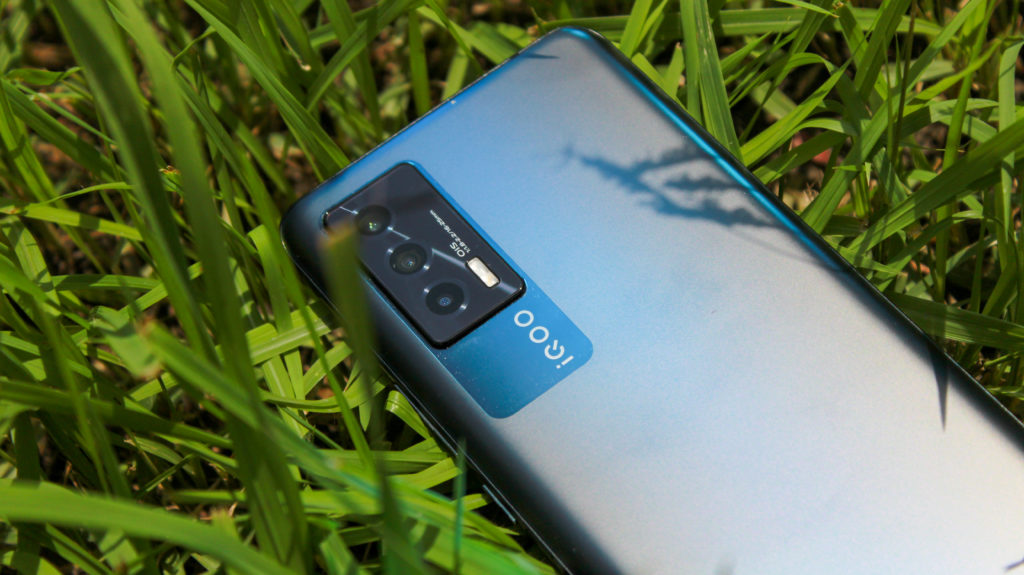
The iQOO 7 is instead straight cut and has sharper lines. The camera housing is a rectangle with rounded corners devoid of any design elements to hide the visual bulk. However, the matte finish feels premium, and the Storm Black shade that we received looks pretty nice. The bottom end houses the speaker grille, Type C connector and sim-tray, the same as its rival. However, the top has an additional microphone while the power button and volume rockers occupy the sides. Note that the power button on the iQOO 7 is devoid of a fingerprint sensor as it’s located under the display. More on that later!
Overall, both these devices are similar in dimensions and weight. But strictly going by the numbers, the iQOO 7 is thicker and heavier, although it doesn’t feel too bad to hold. The buttons on both devices are tight and tactile, but the Mi 11X has my vote for having a flatter design that just makes it pleasant to press.
Display – E4 remains undisputed
Displays have gotten so good now that it’s challenging to rank anyone out of the two higher than the other. The Mi 11X and iQOO 7 gets FHD+ E4 AMOLED panels that operate at 120Hz. Both the devices are HDR10+, and Widevine L1 certified and have rated brightness of upto 1300 nits. And honestly, they do a pretty good job even under direct sunlight. However, the Mi 11X is 0.05 of an inch larger in the display department. Well, this information might strike a chord if size matters to you.
The iQOO 7 offers a display setting that allows a partial variable refresh rate option, in which the device automatically chooses the refresh rate depending upon the task it’s handling. I tried using it, but it didn’t seem to affect the battery life positively.
The displays are simply brilliant, and it’s great for everyday use. For example, I watched a lot of content on Netflix and YouTube and enjoyed it. In addition, the high refresh rate made the gaming experience feel a lot nicer than standard 60Hz panels.
Performance – The League of Snapdragon 870s
Both the devices use the Snapdragon 870 chipset. The 7nm is the spiritual successor of the SD 865, and it’s speedy. Both the Mi 11X and iQOO 7 blazes past everyday tasks and handle daily application tasks very well.
The 6GB RAM on the Mi 11X is ample for almost all use cases, and in my opinion, there’s no point in shelling out more for 2GB more RAM. In the About section in the settings, you can see RAM is clocked at 8GB+3GB; well, that extra 3GB comes from offloading specific tasks from the main RAM unit to the internal fast storage system. What an overkill! That’s true even when you factor in the RAM difference, as on average usage, it’s just so difficult to max out the RAM on Mi 11X.
When we see the bigger picture here, the numbers on paper quickly become irrelevant. An excellent way to showcase that is by considering the gaming experience. The Mi 11X and iQOO 7 perform very well in this department. In my test routine, I played CoD mobile and Asphalt 8 on both these devices.
Both these devices maintain good frame rates even at high graphics settings, and most importantly, heat is controlled super-well. This can be credited to the throttling that prevents both the devices from overheating. While CPU throttling test results showed Mi 11X dropped in performance a smidge more than the iQOO 7, the differences are not noticeable in actual-world conditions. Getting back to gaming, the iQOO 7 uses a gimmicky feature that uses the MeMC to boost frame rates upto 120fps and make it feel smoother. The differences are tiny, and CoD Mobile and Free Fire can only utilize this feature.
Software – MIUI punch Funtouch OS to death
In 2021, I had come to expect a de-cluttered and friendly software experience from phones which hold a substantial price tag. Oh, how wrong was I! Setting up the iQOO 7 was an instant nightmare, and I didn’t touch the phone for an entire day. The iQOO 7, which comes with Funtouch OS, is filled to brim with ads and bloatware. The junk software I sift out by uninstalling them straight away, but I still couldn’t figure out a concrete way to stop ads on a Rs. 35K phone!
MIUI, in comparison, is a lot better and has matured well with time. Don’t get me wrong though, there still are extra apps that come out of the box, but the ads at least can easily be turned off and aren’t as off-putting as those on the iQOO 7.
While we are still talking about the software, certain things come to my mind beyond the UI. For instance, Xiaomi’s Mi 11X supports two bands of 5G, whereas the iQOO 7 supports just one. Such is the case with most 5G devices in India, owing to the lack of 5G infrastructure. Although the chipset supports a broader range of bands, manufacturers keep it locked in and unlocked with software updates in the future.
Talking about software updates, while none of the two brands here would win awards, it’s wise to keep in mind that the iQOO brand has only had one device, the iQOO 3, in the past. iQOO 7 is essentially their second phone. And already, they’ve decided to drop the iQOO UI that came with the iQOO 3 in favour of Funtouch OS from Vivo. So with this sort of track record, I wouldn’t be banking on hopes for future updates. Meanwhile, Xiaomi has been in the market for quite sometime now and MIUI is getting back in the game.
Camera – Depends on your taste
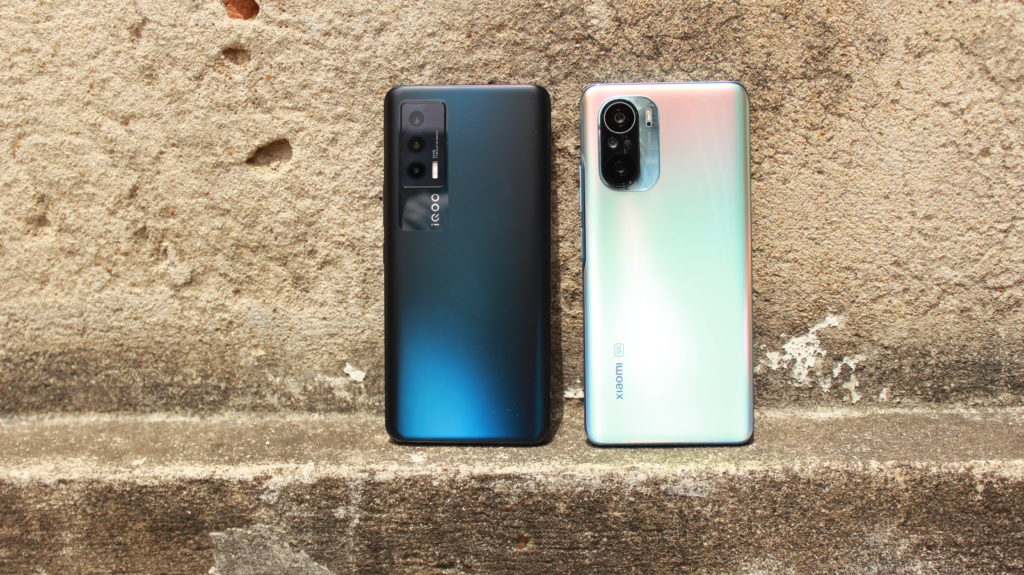
Smartphone cameras have come a long way and especially so in devices at this price range. Mi 11X and iQOO 7 both feature decent triple camera set-ups, and if you aren’t looking out for too many things, you will come out impressed. But, of course, there’s nothing wrong with either of the cameras, and that’s a good thing, as most people out there would want their phone cameras to be decent all-rounders.
Mi 11X and iQOO 7 follow different approaches while processing the images that you have taken. iQOO 7 tends to boost colours while maintaining higher levels of exposure and contrast. As a result, images tend to come out punchy and vibrant. The Mi 11X, on the other hand, takes a subtler approach keeping the colours more accurate to life. As a result, the details are excellent, and the overall image quality is pretty impressive.
I dug a little deeper and looked at the images to look for minute defects. Distortion on both the devices while shooting with the wide-angle lens is well controlled. The shift in colours while going from the primary camera to the wide-angle is also well-executed. Macro mode on the Mi 11X is excellent, and the Xiaomi is quick to focus and snap. iQOO 7 hesitates while focusing when shooting closes up objects. Night mode on the iQOO 7 is excellent, but both devices might suffer from occasional lens glare.
I am not too fond of clicking selfies, but on my watch, I found the Mi 11X captures more significant amounts of details and doesn’t smoothen out natural skin as much as the iQOO 7.
In a quick poll on my Instagram, people unknowingly chose the bright and boosted images clicked on the iQOO 7. Mi 11X lost out by a good margin here. If Instagram’s your drug, you know which smartphone to get.
The video quality on both devices is decent. But few issues crop up here. While iQOO 7 supports 4K at 60fps, the videos come out shaky, and, unfortunately, Vivo doesn’t allow any form of stabilization to work in video mode. I know that’s dumb. The Mi 11X, on the other hand, restricts you to 4K at 30fps but offers greater levels of composure. The microphone set-up on the Mi 11X is better as well.
Battery – iQOO gets ahead here
The Mi 11X and iQOO 7 pack in some hefty amount of juice with 4520mAh and 4400mAh battery capacities, respectively. Don’t let the size of the batteries fool you. Running a powerful processor and a 120Hz display is taxing, and that’s evident from the average of 6 hours of screen-on-time. The Mi 11X manages a tad bit more owing to its slightly bigger capacity.
Gaming and multimedia consumption drains the battery quick. Fast charging is coming to your rescue here. The Mi 11X uses a 33W fast charger, while the iQOO 7 uses a whopping 66W adapter. The iQOO 7 charges from 20% charge to 100% in about 25 odd minutes and heats up slightly on the way to doing so. Mi 11X charges to full from 20% at humbler 55 minutes but doesn’t heat up as much. I can only imagine the devastating effect such high rates of charging would have on the battery life.
Some More Observations
The speakers on both devices are pretty good. The stereo speaker units utilize the bottom-firing speakers and the earpiece to produce ample volume to fill out a medium-sized room.
The fingerprint sensor on the Mi 11X is super quick and nicely positioned in the power button, making it easily accessible. Unfortunately, that’s not the case with the iQOO 7. The iQOO 7 houses its fingerprint sensor under the display is straight-up awful to use. The sensor’s positioning is towards the bottom of the screen makes you stretch your thumb during one-handed use, and it’s so much slower than the one on the Mi 11X.
Verdict – Mi 11X takes the cake
| Xiaomi Mi 11X | iQOO 7 | |
| Design | ✔ | x |
| Display | ✔ | ✔ |
| Performance | ✔ | ✔ |
| Software | ✔ | x |
| Camera | ✔ | x |
| Battery | x | ✔ |
The Mi 11X and iQOO 7 come close to each other, and the standards in each area are truly impressive. For one, the price-to-performance ratio is excellent. But for all comparisons, there must be a winner. And in this one, the Mi 11X takes the crown home.
The Mi 11X offers premium fit and finish and doesn’t end up looking too generic while doing so. The display and performance under the hood are staggering, and generally, you won’t end up asking much more. The cameras are good, and so is the battery life. Most importantly, it’s devoid of tacky gimmicks and awful advertisements embedded in the UI. As a result, the Mi 11X turns out to be much more accomplished than I had expected.


